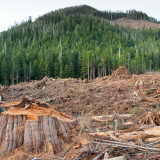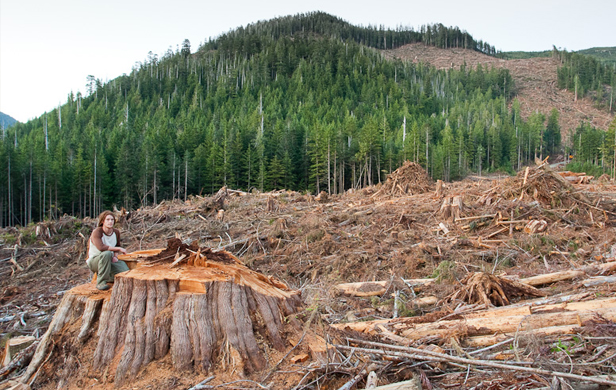Read this story by Andrew Nikiforuk inTheTyee.ca on Stephen Harper’s secretive Canada-China Foreign Investment Promotion Continue reading ‘Chairman Harper’: Andrew Nikiforuk on Secretive Canada-China Trade Deal


Read this story by Andrew Nikiforuk inTheTyee.ca on Stephen Harper’s secretive Canada-China Foreign Investment Promotion Continue reading ‘Chairman Harper’: Andrew Nikiforuk on Secretive Canada-China Trade Deal
Read this story from CTV.ca on last night’s packed town hall meeting in Burnaby, where concerned citizens learned about Kinder Morgan’s proposal to build a new Tar Sands pipeline to Vancouver and dramatically increase supertanker traffic through Burrard Inlet and the South Coast. (Oct. 11, 2012)
Hundreds of Burnaby residents gathered at a town hall meeting to oppose the expansion of the Kinder Morgan pipeline Wednesday night.
A proposal to twin the Trans Mountain pipeline would mean up to 750,000 barrels of oil would flow from Alberta to a terminal on Burrard Inlet, directly under homes in Burnaby.
If approved, an additional 300 tankers a year would be required to ship the oil out of Port Metro Vancouver.
Burnaby Mayor Derek Corrigan said the risk to the community is too high.
“Across the board, Burnaby residents are extremely concerned,” Corrigan said. “We examined it very carefully. On any kind of cost benefit analysis, it fails miserably.”
Residents had the chance to speak out against the expansion.
“Having more tanker traffic here, having increased risk of oil spills, really for what amounts to just money going into the pockets of people who are already doing well thank you very much. It’s very hard for me to give a thumbs up to that under any circumstances,” concerned resident Mark Coulombe said.
Residents also recalled the pipeline’s troubled history. Five years ago work crews ruptured the pipeline, spewing 234,000 litres of oil all over properties on Inlet Drive.
MP Kennedy Stewart said Kinder Morgan needs to provide more information to homeowners and people who live on the proposed route.
The company said they’re still in the planning stages of the route and the National Energy Board hearings begin in 2013.
Read this story from CBC.ca on the federal government’s announcement today that it is postponing its decision under the Investment Canada Act as to whether to permit the purchase of Canadian oil and gas company Nexen by Chinese state-owned CNOOC. (Oct. 11, 2012)
Industry Minister Christian Paradis has extended the federal government’s review of China National Offshore Oil Corp.’s proposed takeover of Nexen Inc. under the Investment Canada Act by 30 days.
CNOOC, one of three Chinese oil companies controlled by the Chinese government, is trying to buy Calgary-based Nexen in a $15-billion takeover.
Shareholders have already signed off on the deal, but any deal worth more than $331 million to take over a Canadian company requires regulatory approval from the Canadian government.
“Extensions to the review period are not unusual,” Paradis said. “In general terms, the Act provides an initial 45 days for the review, which can be extended for an additional 30 days.”
“The review period may be extended again, with the consent of the investor. A decision can be made at any time within this period,” he said.
Under the terms of the act, the transaction must be assessed on six factors, including whether or not it is of “net benefit” to Canada. That clause was most recently invoked with BHP Billiton’s $40 billion offer to buy PotashCorp. in 2010, which Ottawa nixed.
The proposed Nexen takeover has sparked concern across Canada, with Prime Minister Stephen Harper having said it “raises a range of difficult policy questions.”
The NDP is opposed to the deal, citing national security and environmental concerns in urging Ottawa block the transaction.
Read more: http://www.cbc.ca/news/business/story/2012/10/11/ottawa-nexen-cnooc.html
Read this preview story from Forbes.com on the Wall Street firm behind much of the controversial shale gas boom in the United States – Goldman-Sachs, the same investment bank credited with driving the housing and derivatives bubble that precipitated the collapse of the US and global economy in recent years. (Oct., 2012)
Heavy capital needs, steady cash flows and rising asset values are the stuff leveraged buyout artists dream of. That’s one reason the private equity gang has recently been piling into oil and gas deals, specifically those associated with the hydraulic-fracturing boom now in full swing in North America.
One deal that opened up the floodgate of big money interest in fracking was KKR’s $312 million investment in June 2009 for 33% of East Resources, a Pennsylvania oil and gas exploration firm founded by Terrence Pegula. Pegula’s company had accumulated more than 650,000 acres in the Marcellus Shale formation in Appalachia. The KKR cash infusion helped East Resources increase the pace of horizontal wells being drilled, and in May 2010 KKR and Pegula were able to flip East Resources to Royal Dutch Shell for $4.7 billion. The deal made Pegula a multibillionaire and netted KKR over $1 billion, for a 371% return in under a year.
Up until this deal KKR had concentrated mostly on financing electric utilities. However, rising energy prices and the viability of fracking for natural gas changed the deal metrics. A conventional vertical well might cost $1 million to build; wells to tap into shale horizontally cost $8 million to build, a steep price for an oil and gas entrepreneur. Enter private equity.
Soon after East Resources, KKR invested $400 million in June 2010 for a 40% stake in Houston‘s Hilcorp Resources, which was drilling in the Eagle Ford Shale formation in South Texas. The KKR money prompted Hilcorp to add four more horizontal rigs, bringing its total to six and allowing it to drill over 40 horizontal wells. A year later Hilcorp was sold to Marathon Oil for $3.5 billion. KKR collected $1.4 billion of the proceeds.
These energy deals, plus others, have catapulted KKR’s Marc Lipschultz, 43, to near the top of FORBES’ ranking. They may have also set him up as the heir apparent at mighty KKR. Lipschultz joined KKR in 1995 after a stint in M&A at Goldman Sachs. “Energy is an extremely complex industry, and it is always consuming capital,” Lipschultz says. “So there’s a natural marriage between what it does and the thing that we ultimately provide.”
In June the Lipschultz team closed KKR’s first-ever natural resources fund at $1.25 billion, bringing the fund’s total capital for natural resources to $1.6 billion. Rival Blackstone Group recently raised $2.5 billion for energy investments, and Goldman Sachs is currently raising a $2 billion fund.
“The shale revolution is to energy what the Internet was to technology,” says Lipschultz. “It was significant, fast and disruptive.”
Read original online preview story (full story in October print edition of Forbes): http://www.forbes.com/sites/halahtouryalai/2012/10/03/guess-whos-fueling-the-fracking-boom/
Read this story from the Globe and Mail on the anticipated slowdown of Canada’s resource-based economy as global commodity prices show signs of serious decline. (Oct. 9, 2012)
Canada’s resource-fueled economy faces the threat of a swooning commodities market at a crucial point in the economic recovery.
From Europe to the United States and especially in China, the outlook for commodities is diminishing heading into 2013, with the impact already being felt abroad.
Evidence is mounting that Canada, where commodities drive about 20 per cent of the gross domestic product, will not be spared some hardship. Canada is a major producer of potash, coal, iron ore, nickel, copper, gold, zinc and uranium, among other base and precious metals that have been hit especially hard as a decade-old commodities market starts to lose steam.
Resource companies account for about half the weight of the Toronto Stock Exchange, and some are feeling the pinch in profits.
On Wednesday the Organization of Petroleum Exporting Countries and the U.S. Energy Information Administration both shaved their forecasts for crude-oil consumption in 2012 and 2013, citing ongoing weakness in the global economy and hitting a key economic driver for Canada.
“I think over all there is a particularly large impact if you are looking at Canadian equity markets,” said Peter Buchanan, senior economist with the Canadian Imperial Bank of Commerce. “Quite clearly, subdued prospects there do provide some downside risks for some of the metals.”
The International Monetary Fund said this week it had trimmed its forecasts for economic growth in Canada – to 1.9 per cent this year and 2 per cent next, down in each case by 0.2 percentage points from earlier projections – and warned unemployment will remain at 7.3 per cent.
That came just days after Toronto-listed Thompson Creek Metals Co. said it was cutting $100-million in spending at an Idaho mine in order to be able to finance construction of a new mine in British Columbia.
Suncor Energy Inc. said in July it was rethinking billions of dollars of planned spending because of increasing costs.
Lower capital spending by the resource sector, about one-quarter of total business capital spending, could end up having a significant impact on Canada because it is such an important driver of the economy.
“The prospects that one of the other sectors, consumption or government spending, could accelerate to offset that is virtually zero,” said George Vasic, chief economist and strategist at UBS Securities Canada Inc. Mr. Vasic said he is not yet alarmed about the potential impact on Canada, but that his outlook could change if business capital expenditures fall off in Canadian resources. “So, it is a significant potential development, which I think is only partially reflected in forecasts,” he said.
The world’s third-biggest diversified miner, Rio Tinto PLC, started the week by saying it had become more cautious about the business outlook than even a few months ago. It says it will delay new project approvals in the near term.


Read this story from the Canadian Press on new plans by the BC Liberal Government to open up old growth forests to logging as conventional forests decline in the wake of the pine beetle epidemic and over-harvesting that has eaten into future timber supply. (Oct. 9, 2012)
VANCOUVER — The B.C. government has opened the door to the controversial idea of logging old-growth forests in parts of the province in an effort to boost the timber supply over the next five to 20 years.
But Forests Minister Steve Thomson says any decisions to cut would be science-based and reached by consensus from all members of the community.
Examining the old-growth potential in central B.C. is one of several actions the province plans to take after a government committee warned in August that measures must be taken to stave off a dramatic drop in timber supply.
Thomson says municipal governments whose economies rely on the forest sector were the first to suggest opening some old-growth areas, though even the industry has reported it doesn’t want such logging to be a priority.
The minister says a framework for revisiting the designation of sensitive areas will be ready in early 2013, and potential pilot projects could eventually take place in Burns Lake and Quesnel.
The government says the timber supply plan is the final phase in its decade-long response to the infestation of the mountain pine beetle, which has decimated forests across the province.
Read original story: http://www.canada.com/business/mulling+logging+growth+forests/7364993/story.html
Read this story from alternet.org on the various environmental and economic factors restricting the development of “extreme energy” – from fracking to shale oil and bitumen. (Oct. 4, 2012)
To reach their ambitious targets, energy firms will have to overcome severe geological and environmental barriers — and recent developments suggest that they are going to have a tough time doing so.
Last winter, fossil-fuel enthusiasts began trumpeting the dawn of a new “golden age of oil” that would kick-start the American economy, generate millions of new jobs, and free this country from its dependence on imported petroleum. Ed Morse, head commodities analyst at Citibank, was typical. In the Wall Street Journal he crowed, “The United States has become the fastest-growing oil and gas producer in the world, and is likely to remain so for the rest of this decade and into the 2020s.”
Once this surge in U.S. energy production was linked to a predicted boom in energy from Canada’s tar sands reserves, the results seemed obvious and uncontestable. “North America,” he announced, “is becoming the new Middle East.” Many other analysts have elaborated similarly on this rosy scenario, which now provides the foundation for Mitt Romney’s plan to achieve “ energy independence ” by 2020.
By employing impressive new technologies — notably deepwater drilling and hydraulic fracturing (or hydro-fracking) — energy companies were said to be on the verge of unlocking vast new stores of oil in Alaska, the Gulf of Mexico, and shale formations across the United States. “A ‘Great Revival’ in U.S. oil production is taking shape — a major break from the near 40-year trend of falling output,” James Burkhard of IHS Cambridge Energy Research Associates (CERA) told the Senate Committee on Energy and Natural Resources in January 2012.
Increased output was also predicted elsewhere in the Western Hemisphere, especially Canada and Brazil. “The outline of a new world oil map is emerging, and it is centered not on the Middle East but on the Western Hemisphere,” Daniel Yergin, chairman of CERA, wrote in the Washington Post . “The new energy axis runs from Alberta, Canada, down through North Dakota and South Texas… to huge offshore oil deposits found near Brazil.”
Extreme Oil
It turns out, however, that the future may prove far more recalcitrant than these prophets of an American energy cornucopia imagine. To reach their ambitious targets, energy firms will have to overcome severe geological and environmental barriers — and recent developments suggest that they are going to have a tough time doing so.
Consider this: while many analysts and pundits joined in the premature celebration of the new “golden age,” few emphasized that it would rest almost entirely on the exploitation of “unconventional” petroleum resources — shale oil, oil shale, Arctic oil, deep offshore oil, and tar sands (bitumen). As for conventional oil (petroleum substances that emerge from the ground in liquid form and can be extracted using familiar, standardized technology), no one doubts that it will continue its historic decline in North America.
The “unconventional” oil that is to liberate the U.S. and its neighbors from the unreliable producers of the Middle East involves substances too hard or viscous to be extracted using standard technology or embedded in forbidding locations that require highly specialized equipment for extraction. Think of it as “ tough oil .”
Read more: http://www.alternet.org/environment/why-new-golden-age-oil-has-been-bust

Damien Gillis discusses the resistance to the Enbridge pipeline, the recent “Keepers of the Water” conference in Fort Nelson, BC, and the increasing impacts on water, human and animal health from natural gas hydraulic fracking with CJSF’s Sylvia Richardson. The pair also touch on Damien’s documentary film project Fractured Land, currently in production, which examines these issues and the concept of “Canada’s Carbon Corridor” – an interconnected web of fossil fuel and mining projects throughout northern Alberta and BC, designed to open up new markets in Asia – told through the eyes of a young First Nations law student. (Oct. 6 – 20 min)

You should read Environment Minister Terry Lake’s op-ed piece in Friday’s Vancouver Sun. If ever you needed proof of the utter incompetence of the Campbell/Clark government this will do it.
He gives the government position re the proposed Enbridge pipeline.
Lake calls for the Joint Review Panel to “successfully complete the environment review process”.
What does that mean, Mr. Lake, when the federal government says that Enbridge will go anyway? Don’t you see that the fix is in!
Have you ever been to such a meeting, minister?
You will find an essential piece missing – namely, can the people of BC give their opinions as to whether or not they want the project in the first place?
Then you call for “World leading marine oil spill reaction, prevention and oil recovery systems for BC’s coastline and ocean to manage and mitigate the risks and cost of heavy oil pipelines and shipments”.
Who writes this crap? The ever-active PR department of Enbridge?
Don’t you understand that spills are inevitable and likely in areas too remote for any machinery to get in? And that there’s very little they can do about it anyway, as demonstrated by Enbridge’s 2010 spill into the Kalamazoo River?
Haven’t you looked at Enbridge’s spill record of more than one per week?
But there is a deeper question minister – don’t you understand that the consequences of spillage of bitumen, whether on land or in the ocean, are many, many times more lethal than the crude oil spilled by the Exxon Valdez?
Don’t you understand that unlike crude oil spills, the bitumen sinks like a rock? With crude oil, the technique of “rafting” corrals the spill and allows much of it to be siphoned off, but that you can’t do that with bitumen?
Don’t you get it? That we’re not talking about risks, but, by Enbridge’s own admission, certainties? Certainties with catastrophic consequences?
I hate to urge people to read the Vancouver Sun, but your article is such appalling drivel that it gives the public a unique opportunity to see the sloppy crap that is your government’s mindless and highly political response to certain destruction of our heritage – all to supply China with bitumen to refine.
At least you have, by this column, made clear what environmentalists have been saying all along – the Clark government is unfit to govern.
Read this story from the Vancouver Sun on a recent deal by American company Cheniere Energy Inc. to sell Liquified Natural Gas (LNG) to Asian buyers at heavily discounted North American rates. The deal alarmed the Canadian natural gas industry, which is currently pursuing LNG exports to Asia on the premise of fetching the considerably higher prices Asian markets currently pay for the product. (Oct. 4, 2012)
British Columbia’s first major liquefied natural gas export terminal is facing a significant new challenge after a rival U.S. exporter signed a deal undercutting the hoped-for price for selling gas into Asian markets.
David Calvert, an Apache Corp. vice-president and manager of the Kitimat LNG terminal said U.S.-based Cheniere Energy Inc. set a dangerous precedent by agreeing to sell gas from its proposed Louisiana export terminal based on heavily discounted North American gas prices.
“Cheniere did a deal … that created quite a ripple through the marketplace,” Calvert said Tuesday, adding the deal has created “unrealistic” expectations for products from Kiti-mat LNG.
Speaking to an Energy Roundtable audience in Calgary on Tuesday, Calvert said the Kitimat site is cleared for a new terminal and work is starting on the pipeline route.
But, he added, final sanctioning of the terminal hinges on winning long-term sales contracts, which is not a done deal.
Calvert’s comments are significant, given Premier Christy Clark has founded much of her BC Jobs Plan on the development of as many as five plants exporting LNG into Asian markets.
Last year, Clark promised the first plant would be fully operational by 2015.
“Today, we’re looking at perhaps five big liquefied natural gas proposals that, if built, could add over a trillion dollars to our GDP in direct upstream and downstream benefits over the course of 30 years,” Clark said Tuesday in an address to the University of Calgary.
“That’s the potential of producing four trillion cubic feet per year of exports by 2020,” she continued, adding the land is already being cleared for Apache’s plant in Kitimat.
Apache needs contracts based on oil prices to justify the cost of the planned $4.5-billion LNG export plant and pipeline in British Columbia, Calvert said. The plant is a joint venture of Apache, EOG Resources Inc. and Encana Corp.
“The bottom line is for LNG producers to provide the stability buyers are looking for and for us to make the significant capital investments required for greenfield LNG projects, we must have long-term contracts with prices that reflect these critical consideration and realities,” said Calvert.
“We remain convinced that oil-linked pricing is critical to the viability of our Canadian LNG industry.”
North American natural gas prices have plunged amid a glut caused by rising shale output, increasing the interest in exports to Asia. Japan paid $17.58 per million British thermal units to import gas from the U.S. in July, according to LNG Japan Corp. Natural gas for November delivery settled at $3.531 per million Btu on Tuesday on the New York Mercantile Exchange.
Energy, Mines and Natural Gas Minister Rich Coleman said Wednesday he is not concerned about the pricing issue.
“Today we have three of the major players on liquefied natural gas in the world who have all taken up positions in British Columbia, that’s Shell, Petro-nas and British Gas. They’re all pretty aggressive.”
New Democratic Party energy critic John Horgan was more cautious about the outlook.
“I’ve said all along that this is a challenge and that the markets will determine if this is successful or not,” Horgan said Wednesday.
Read more: http://www.vancouversun.com/business/price+deal+alarms+firm/7342196/story.html